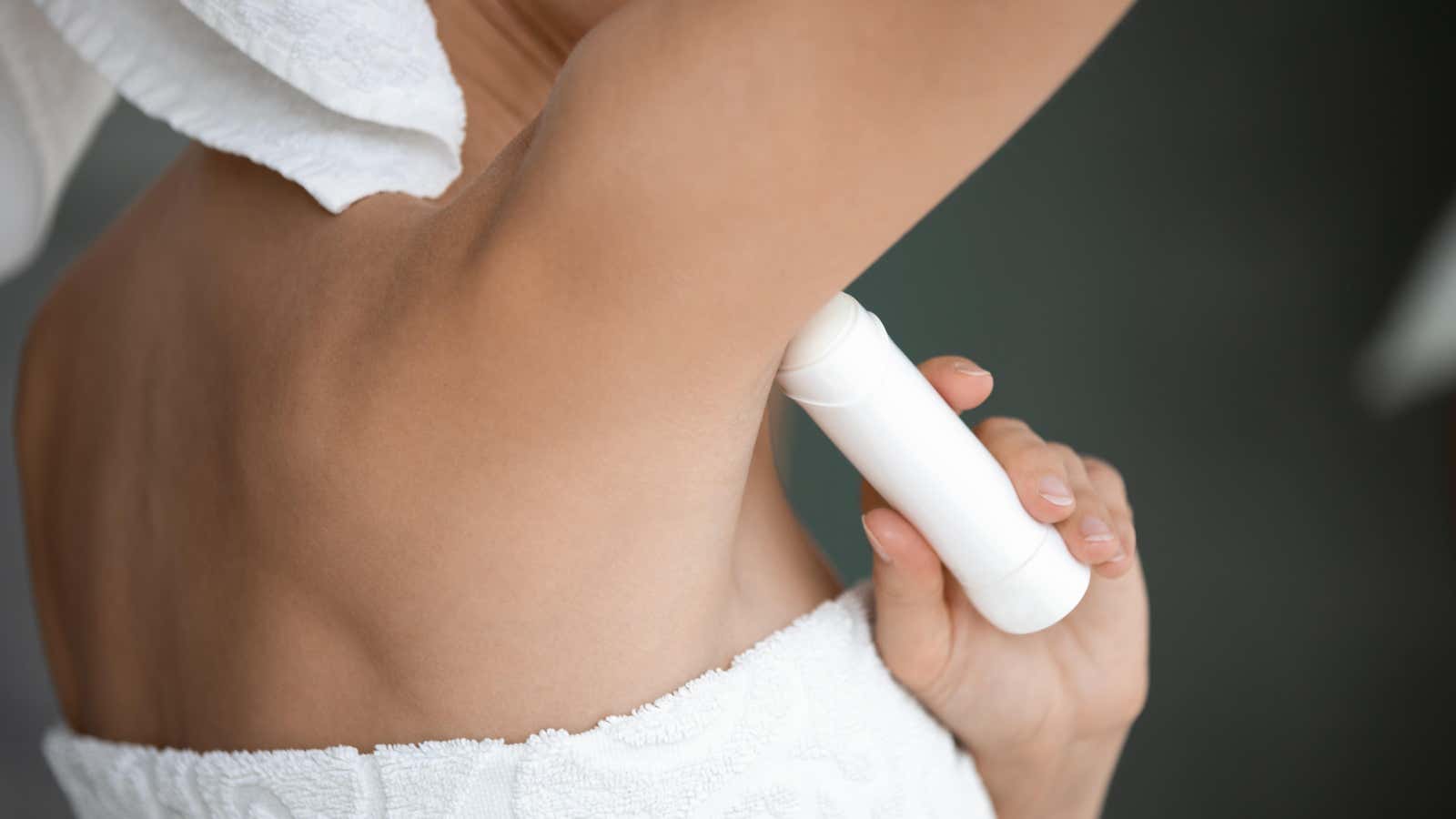Should I Make My Own Deodorant?

While the internet wisdom about the dangers of using antiperspirants is exaggerated ( you really don’t need to worry if your antiperspirant contains aluminum ), you may have wondered if you should go more natural when dealing with body odor. Deodorants mask odor without stopping your body from producing sweat ( which is what an antiperspirant does ), and there are a range of brands that promise to do it more “naturally,” from Tom’s of Maine ($4.89) to Native ($12.99). to Schmidt ($9.19), to Luma ($16.99). The problem is that, with the exception of Tom (who keeps his underarms wet all day), they are often quite expensive. ( Thirty dollars for this Rutin deodorant gets you an amount comparable to what you’d find in a container of stupid putty.)
But there’s another way to get “naturally” less smelly pits – make your own deodorant. While it may seem ineffective or time-consuming at first glance, homemade deodorant is a good way to avoid ingredients you don’t want to put on your skin and leave a few extra bills in your pocket.
Why make your own deodorant?
While concerns about the toxicity of aluminum in deodorant have been allayed (there is no conclusive evidence linking aluminum to Alzheimer’s or breast cancer), you may want to avoid antiperspirants for other reasons. Their fragrances can cause itching, allergic rashes, or exacerbate asthma ; according to the David Suzuki Foundation, the antioxidant BHT (listed as an ingredient in the Dove 0% aluminum stick I currently use) can also cause allergic skin reactions.
Deodorants may also contain phthalates and triclosan, which, according to the National Institute of Environmental Sciences , are endocrine disruptors “associated with developmental, reproductive, brain, immune, and other problems.” The NIH acknowledges that “there is limited scientific information on potential health problems in humans” because people are typically exposed to multiple endocrine disruptors at the same time, and assessing the effects of a single disruptor is difficult. But, according to the Endocrine Society , endocrine-disrupting chemicals “have been associated with numerous adverse human health outcomes, including … sperm quality and fertility, abnormalities in the genitals, endometriosis, early puberty, altered nervous system function, immune function, some types of cancer. …” The list goes on.
It’s worth bearing in mind that if you’re ditching store-bought deodorants because of allergies or skin sensitivities, any fragrances or essential oils you add to your homemade version can cause the same problems. In addition, the regulations governing the sale of personal care products mean that certain tests have been carried out and they have been found to be safe to use.
Whether you’re worried about the ingredients in store-bought deodorants or not, the fact that you make your own deodorant will save you money and result in less plastic waste. In my experience, homemade deodorants actually work too, although they can take a while to get used to if you used to prefer antiperspirants that completely stopped you from sweating. (And they’ll keep you drier than Tom’s deodorant for a fraction of the cost.)
How to make your own deodorant
A quick Google search will turn up hundreds of simple recipes, most with three to four basic ingredients: cornstarch or arrowroot powder (to absorb moisture), baking soda (to absorb and reduce odor), coconut oil (to protect against odor). -bacterial properties) and essential oils (to smell good).
You can experiment with different bases (such as shea butter, cocoa butter, and coconut oil), powders (cornstarch, arrowroot, baking soda), and essential oils to achieve your desired consistency and flavor.
Basic deodorant recipe
- 6 tablespoons coconut oil
- 4 tablespoons of baking soda
- 4 tablespoons cornstarch
- 5-10 drops of essential oil (optional)
Mix the powders, mash with a fork in coconut oil. Blend to desired consistency, adding more powder as needed. Add essential oil if desired. While it can be applied with your fingers, place it in an empty deodorant stick for easy application. Note. Homemade deodorant should be stored in a cool place, as its ingredients can melt at higher temperatures.